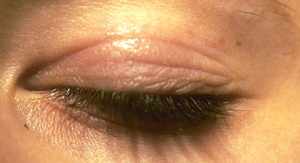

MedFriendly®


Blepharectomy
Blepharectomy means removal of all or part of an
eyelid. The procedure is typically specified as an upper
or lower blepharectomy depending on whether the
upper or lower eyelids are targeted. Blepharectomy is a
standard treatment for people with thyroid eye disease.
Thyroid eye disease is a condition that affects the eyes
due to an overactive thyroid gland. The thyroid gland is
a butterfly-shaped organ located in front of the neck
that produces hormones and helps regulate numerous
bodily functions.
FEATURED BOOK: The Eye Book: A Complete Guide to Eye Disorders and Health
Thyroid eye disease can cause tightening on the eyelid muscles, which causes the upper
eyelid to pull down and/or the lower eyelid to pull up. Of these problems, upper eyelid
retraction is more common. A blepharectomy can safely, effectively, and quickly help
treat this problem. There are other causes of upper lid retraction that can be treated with
a blepharectomy such as trauma and facial nerve palsy (paralysis of structures served by
the facial nerve, such as the eyes).
One complication involved with a blepharectomy is ptosis, which is drooping of the upper
eyelid or lower eyelid. Another complication is wound dehiscence, which is when the
wound breaks open along the surgical suture. This complication is related to sutures that
are used during the procedure. Blepharectomy comes from the Greek word “blepharon”
meaning “eyelid” and the Greek word “ektome” meaning “excision.” Put the words
together and you have “an eyelid excision.”
"Where Medical Information is Easy to Understand"™















